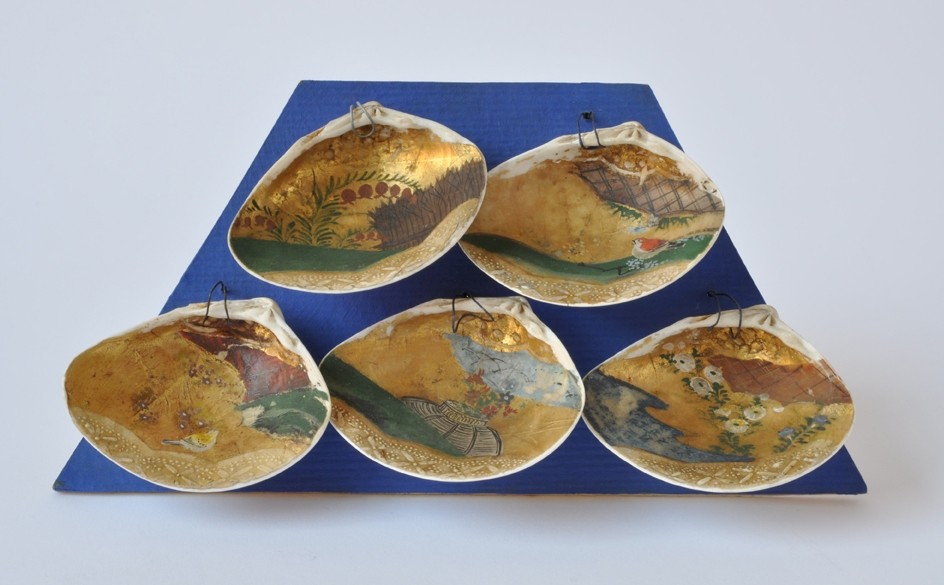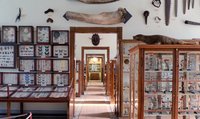Fünf Objekte eines Muschelspiels aus Japan, Edo-Zeit. Die Muschelgehäuse sind außen natur-weiß belassen, innen jedoch auf Goldgrund bemalt. Das Spiel ist dem Memory verwandt: Die Muscheln werden umgedreht, so dass die bemalte Seite nicht zu sehen ist. Nun gilt es, die beiden zusammengehörenden Muschel-Schalen durch Umdrehen und erneutes Verdecken zu finden, die jeweils das gleiche Motiv zeigen.
Zu diesem Satz Muscheln gehört noch der passende Gegensatz (siehe NAT 0134). Ursprünglich befanden sich sechs Paar in der Linck-Sammlung, von denen heute noch fünf Paare erhalten sind.
Belegt im Linck-Index I. (1783), S. 164, No. 1: "Das Chinesische oder japanische Spiel, aus dem asiatischen Meere. Sie sind inwendig schön vergoldet und gemahlt, auswendig aber weiß, und werden zu gewissen Spielen wie unsere Carten gebraucht."
en

